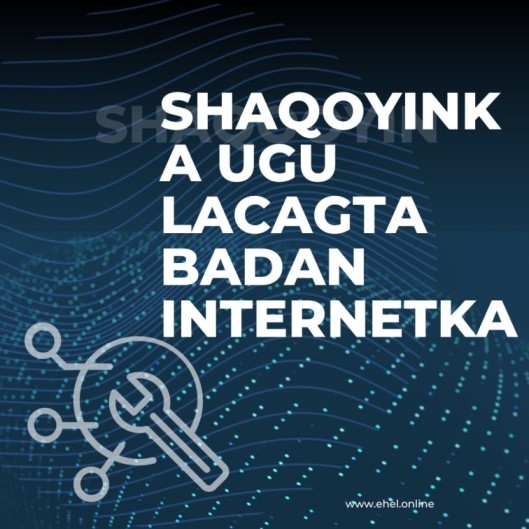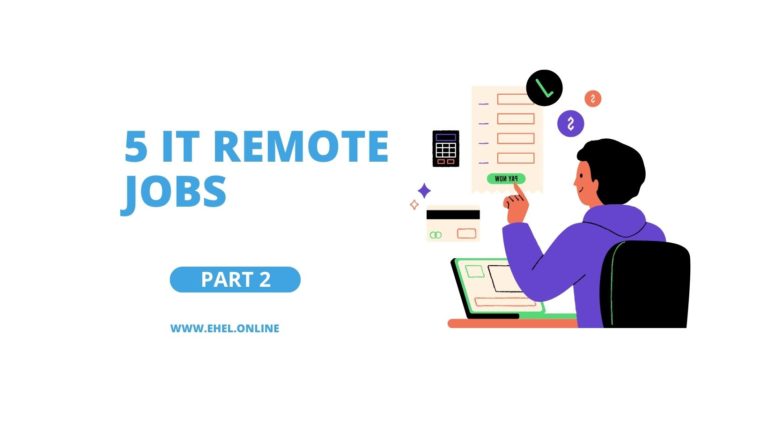How To Make Money Online

There are various ways to make money online, and the right method for you depends on your skills, interests, and resources. Here are some common ways people make money online:
- Freelancing: Offer your skills and services on platforms like Upwork, Freelancer, or Fiverr. This could include writing, graphic design, programming, digital marketing, and more.
- Online Courses: Create and sell online courses on platforms like Udemy, Teachable, or Skillshare. If you’re an expert in a specific area, you can create instructional content for others.
- Affiliate Marketing: Promote other people’s products and earn a commission for every sale made through your referral. Amazon Associates and ClickBank are popular affiliate marketing platforms.
- Blogging: Start a blog and monetize it through advertising, sponsored content, affiliate marketing, or selling digital products. You can use platforms like WordPress, Blogger, or Medium.
- YouTube Channel: Create and upload videos on YouTube. Once you meet the eligibility requirements, you can monetize your videos through ads. You can also earn money through sponsorships and affiliate marketing.
- Sell Products: Open an online store on platforms like Etsy or Shopify to sell physical or digital products.
- Remote Work: Many companies offer remote work opportunities. Websites like Remote OK, We Work Remotely, and FlexJobs list remote job opportunities in various fields.
What Is Freelancing
Freelancing is a type of employment where individuals work as independent contractors, offering their services to clients or businesses on a project basis. Instead of being employed by a single employer on a long-term basis, freelancers work for themselves and take on projects from various clients. The arrangement is typically temporary, and freelancers are not bound by a traditional employer-employee relationship.
Here are some key characteristics of freelancing:
- Independence: Freelancers are self-employed and work independently. They have the flexibility to choose their clients, projects, and working hours.
- Project-Based Work: Freelancers are hired to complete specific projects or tasks. These projects can range from short-term assignments to long-term collaborations.
- Diverse Skill Sets: Freelancers can offer a wide range of skills, including writing, graphic design, programming, marketing, consulting, and more. The skills needed depend on the nature of the project.
- Flexible Schedule: Freelancers often have control over their work hours, allowing them to create a schedule that suits their lifestyle. This flexibility is one of the appealing aspects of freelancing.
- Remote Work: Many freelancers work remotely, communicating with clients and completing tasks online. This allows freelancers to work with clients from around the world.
What Is Online Courses
Online courses, also known as e-learning or distance education, refer to educational programs or classes that are delivered and conducted over the internet. These courses enable individuals to access educational content, interact with instructors, and complete assignments remotely. Online courses can cover a wide range of subjects and academic levels, from basic skills to advanced professional development. Here are key aspects of online courses:
- Delivery Methods:
- Video Lectures: Many online courses include pre-recorded video lectures that students can watch at their own pace.
- Text-Based Content: Written materials, such as articles, e-books, and slideshows, are often provided to supplement learning.
- Interactive Elements: Online courses may include quizzes, discussion forums, and interactive exercises to engage learners.
- Platforms:
- Online courses are hosted on various platforms such as Coursera, edX, Udacity, Khan Academy, and others.
- Educational institutions, including universities and colleges, often use Learning Management Systems (LMS) like Moodle or Canvas to deliver online courses.
- Flexibility:
- One of the primary advantages of online courses is flexibility. Students can access course materials and complete assignments at times that suit their schedules.
- This flexibility is especially beneficial for individuals who are working or have other commitments.
- Accessibility:
- Online courses provide access to educational opportunities for people who may not have the ability to attend traditional classes due to geographical constraints, work obligations, or other reasons.
- They can be accessed from anywhere with an internet connection.
- Interaction and Communication:
- Online courses often include features for communication between students and instructors. This may involve discussion forums, live chat sessions, or email communication.
- Some courses incorporate live webinars or virtual meetings to enhance interaction.
What Is Affiliate Marketing
Affiliate marketing is a performance-based marketing strategy where individuals (affiliates) earn a commission for promoting and generating sales or leads for a product or service. It is a form of revenue sharing between the product or service provider (merchant) and the affiliate marketer. The affiliate earns a commission for each sale or action made through their unique affiliate link.
Here’s how affiliate marketing typically works:
- Affiliate Signs Up:
- An individual, often referred to as an affiliate or publisher, joins an affiliate program offered by a merchant or an affiliate network. This program provides them with a unique affiliate link.
- Promotion of Products/Services:
- The affiliate promotes the merchant’s products or services through various marketing channels such as websites, blogs, social media, email, or other online platforms.
- Unique Affiliate Links:
- The affiliate includes their unique affiliate tracking link in the promotional content. This link allows the merchant to track which sales or leads are generated through the affiliate’s efforts.
- User Clicks and Makes a Purchase/Action:
- When a user clicks on the affiliate link and makes a purchase or completes a desired action (such as signing up for a trial or filling out a form), the affiliate is credited for that sale or lead.
- Commission Earned:
- The affiliate earns a commission, which is typically a percentage of the sale amount or a fixed amount per lead. The commission structure is predetermined and specified in the affiliate program’s terms.
What Is Blogging
Is a like ehel .online blogging refers to the act of creating and maintaining a blog, which is a regularly updated website or online platform where individuals or groups share information, opinions, and content on a specific subject. Blogs can cover a wide range of topics, including personal experiences, hobbies, travel, technology, lifestyle, business, and more. Bloggers, the individuals who create and manage blogs, often publish written articles, images, videos, and other multimedia content to engage with their audience.
Key features of blogging include:
- Content Creation:
- Bloggers regularly create and publish content on their blogs. This content can take the form of written articles, images, infographics, videos, and more.
- Frequent Updates:
- A blog is characterized by its regular updates. Whether it’s daily, weekly, or at another frequency, consistent publishing is essential for maintaining and growing an audience.
- Interactivity:
- Blogs often allow for reader comments and interaction. This fosters a sense of community and engagement around the blog’s content.
- Archives:
- Blog posts are typically organized in reverse chronological order, with the most recent content appearing first. Older posts are archived and can be accessed through categories, tags, or an archive page.
- Multimedia Elements:
- Blogs often incorporate various media types to make content more engaging. This can include embedded videos, images, infographics, and audio files.
What Is Youtube Channel
It seems like there might be a small typo in your question. If you’re asking about a “YouTube Channel,” then I can provide information about that.
A YouTube Channel is a dedicated space on the YouTube platform where users can upload, share, and organize their videos. Individuals, businesses, organizations, and content creators can create channels to showcase their content and engage with their audience. Here are key features and aspects of a YouTube Channel:
features and aspects of a YouTube Channel:
- Content Hosting:
- Users can upload videos to their YouTube Channel. These videos can be a wide range of content, including vlogs, tutorials, reviews, entertainment, educational material, and more.
- Channel Customization:
- Creators can customize the appearance of their channel by adding a profile picture, cover art, and organizing videos into playlists. This helps create a distinct and visually appealing channel.
- Subscribers:
- Viewers can subscribe to a YouTube Channel to receive updates when new videos are uploaded. Subscribers are an essential metric for many content creators, indicating the size and engagement level of their audience.
- Monetization:
- YouTube offers a Partner Program that allows eligible channels to monetize their content through ads. Creators can earn revenue based on ad views and clicks. Other monetization options include channel memberships, merchandise shelf integration, and Super Chat during live streams.
- Analytics:
- Creators have access to analytics tools that provide insights into their audience’s behavior. This includes information on views, watch time, demographics, and more.
What Is Sell Product
“Sell Product” is a phrase that generally refers to the process of marketing and exchanging goods or services for money. Here’s a breakdown of what it involves:
- Product or Service:
- The term “product” can refer to physical goods, digital products, or services. It’s something that a business offers to meet the needs or wants of consumers.
- Marketing and Promotion:
- Selling a product involves creating awareness about it. This is typically done through marketing and promotional activities. This can include advertising, social media marketing, content creation, and other strategies to showcase the value and benefits of the product.
- Sales Channels:
- Businesses can sell products through various channels, including physical retail stores, e-commerce websites, social media platforms, and third-party marketplaces.
- Customer Interaction:
- Engaging with potential customers is a crucial aspect of selling products. This involves answering questions, addressing concerns, and providing information to help customers make informed purchasing decisions.
- Transaction Process:
- The actual sale involves a transaction where the customer pays for the product. This can occur through various payment methods, such as credit cards, digital wallets, or cash, depending on the sales chann
What Is Remote Work
Remote work, also known as telecommuting or telework, refers to the practice of working outside a traditional office environment, often from home or another location. Instead of commuting to a physical office, remote workers use technology to perform their job duties and communicate with colleagues and supervisors. Remote work has become increasingly popular and feasible due to advancements in technology and changes in work culture. Here are key aspects of remote work:
- Location Independence:
- Remote work allows employees to perform their job responsibilities from any location with an internet connection. This location independence provides flexibility and the opportunity to work from home, co-working spaces, or other remote locations.
- Technology Enablement:
- Advances in technology, such as high-speed internet, video conferencing, project management tools, and cloud computing, have made remote work more practical and efficient. These tools enable seamless communication and collaboration among remote team members.
- Flexible Work Hours:
- Remote work often comes with flexible work schedules. Instead of adhering to traditional 9-to-5 hours, remote employees may have the flexibility to set their own work hours within certain parameters.
- Communication Tools:
- Remote teams rely on a variety of communication tools to stay connected. Video conferencing platforms (e.g., Zoom, Microsoft Teams), messaging apps (e.g., Slack, Microsoft Teams), and email are commonly used to facilitate communication.
- Collaboration Platforms:
- Project management and collaboration tools (e.g., Trello, Asana, Slack) help remote teams coordinate tasks, track projects, and share information in a centralized digital space.
Daawo:Do This To Make $10,000 as a student
NOTE:
Macmiil waxaan rabaa inaa ku xasuusiyo inaa kusoo kordhinay dhisida website, waxaa si fudud kaga caawinkarnaa inaa kuu dhisno website kada riyada, qiimo jaban iyo waqti yar gudaheeda, hadaba ka faa’iideso fursadaan weyn si aad u rumeyso riyadada website kaada mahadsanid
Daalaco:Waa Maxay AI
DHAMAAD
Hadii aad intaan soo gartay waad guulesatay, waxaan ku rajayna inaa maqaalkan/ article kan wax ka faidi doontid illah idinkiis, waxii su’aalo ah qeybta comment no ku reeb ama tobic aad jaceshahay inaa kaso hadalno Insha allah. THANK YOU YOUR VISIT.





